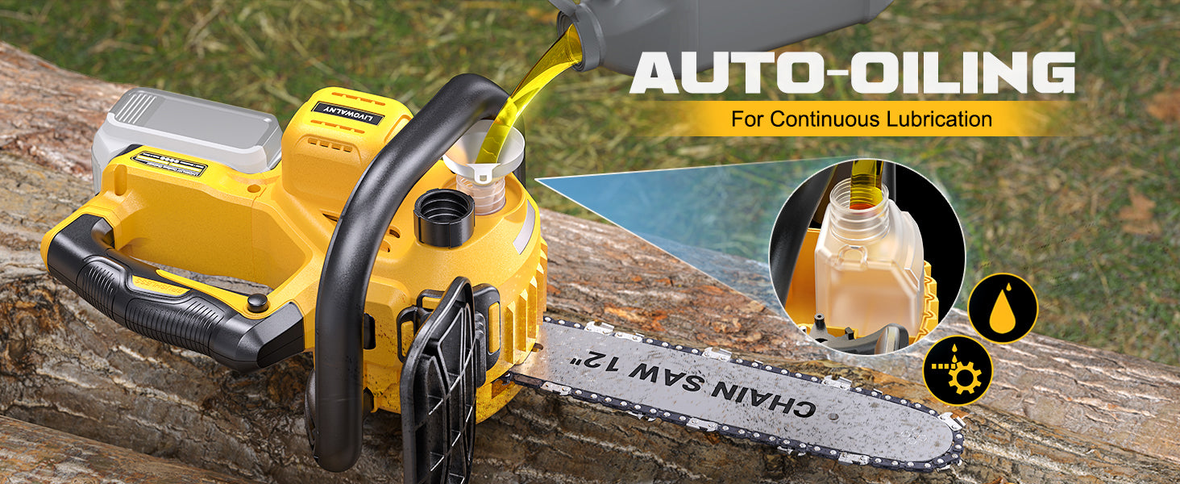
WHY DO CORDLESS CHAINSAWS LEAK BAR OIL
If you’ve ever gone to grab your cordless chainsaw and noticed an oily mess on the shelf or floor, you’re not alone. Bar oil leakage is one of the most common quirks owners of battery-powered chainsaws experience. But is it a design flaw or just part of how these tools work? In this post, we’ll dig into the reasons why cordless chainsaw leaking bar oil, when it’s normal, when it’s a problem, and how to minimize the mess.
Understanding the Chainsaw Oiling System
Before diving into the reasons for oil leaks, it's important to know how the oiling system works. Chainsaws use bar and chain oil to lubricate the cutting components, reducing friction and heat. This oil is stored in a reservoir and automatically fed onto the bar during operation via a small oil pump.
Since the system is gravity-fed or pressure-assisted depending on the model, it doesn’t have a closed-loop circulation. This makes it vulnerable to seepage - especially when the saw isn’t in use.
Normal vs. Problematic Chainsaw Leaking Bar Oil
Some leakage is normal. After cutting, some oil remains in the bar, chain groove, or around the oiling port. When you store the saw - especially flat or on its side - that leftover oil can slowly seep out, leaving a small puddle or damp spot. Temperature changes can cause expansion in the oil tank, forcing oil out even if the saw hasn’t been used. But excessive leaking or puddles of oil may signal a deeper issue.
When It’s a Sign of a Problem
While minor seepage is normal, there are times when it’s worth a closer look:
Large oil puddles forming quickly while the saw is in storage
Frequent refilling of bar oil with only light use
Visible cracks or damage in the oil tank or oil line
Oil leaking from the motor housing or battery compartment (a rare but serious sign)
These could point to issues like:
A cracked oil line
A damaged or loose oil cap
Failed oil pump seals
Internal oiling system blockages
How to Reduce Cordless Leaking Bar Oil
You can’t prevent every drop, but here are a few smart steps to keep things cleaner:
Don’t overfill the oil tank - leave a bit of space for expansion.
Store the saw upright, ideally on a drip tray or absorbent pad.
Wipe down the bar and chain after use to remove excess oil.
Use high-quality bar oil - thinner oils tend to leak more.
Clean out sawdust buildup around the oiling port and bar groove.
Drain the oil if storing the chainsaw long-term or in a hot area.
While some oil leakage is normal (especially after heavy use), excessive dripping can indicate an issue that needs attention. With a little maintenance and proper storage, you can keep the mess to a minimum and your chainsaw running smoothly. Got a leaky saw? Don’t panic - keep it clean, check the basics, and remember: a lubricated chain is a healthy chain.






